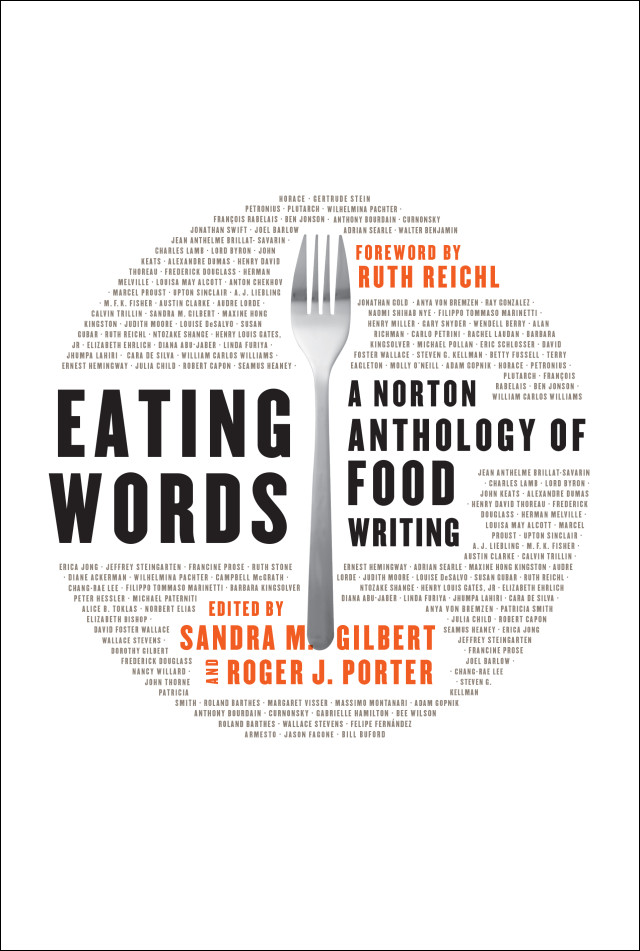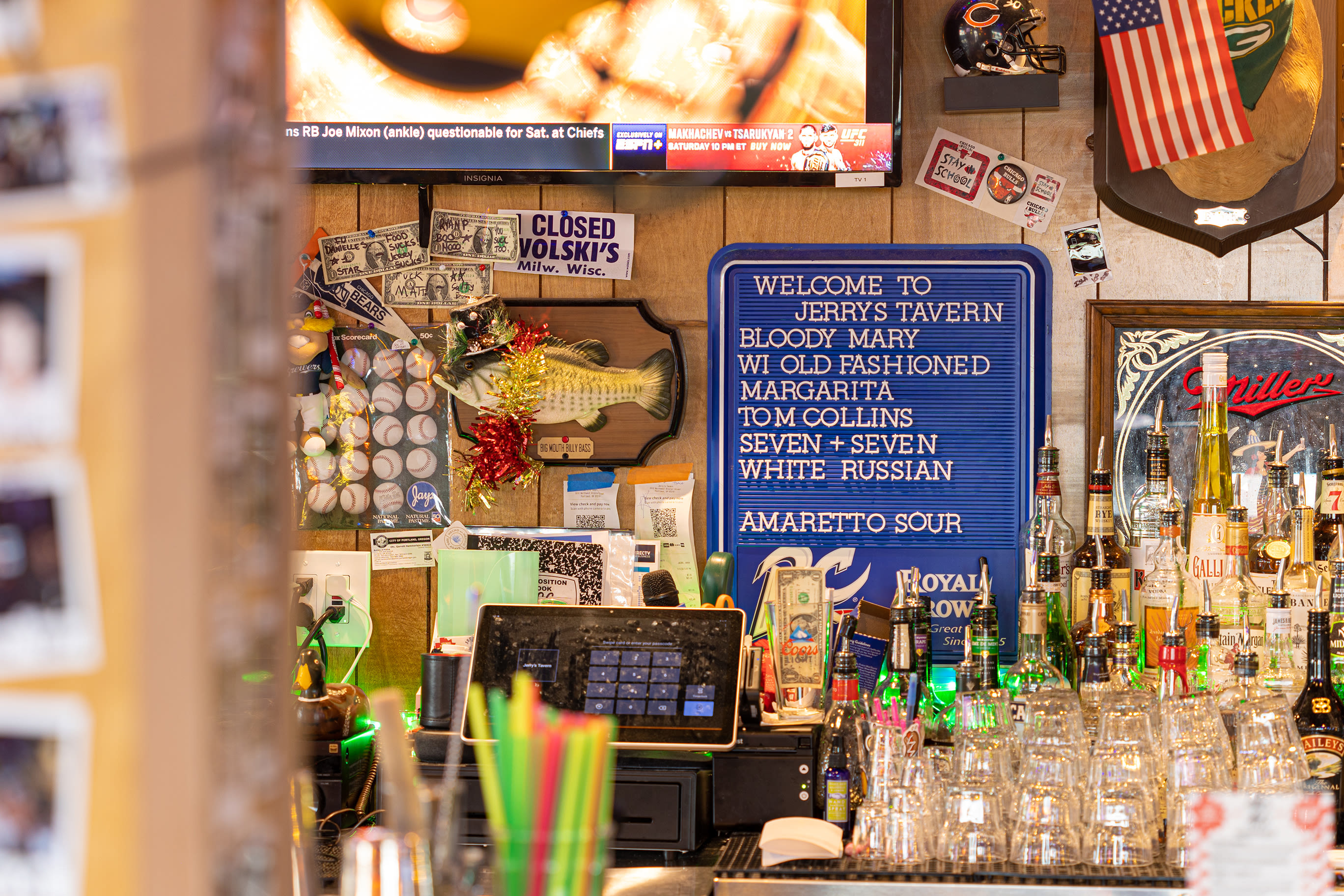Q&A with Roger Porter: Eating Words Is a Feast of Reading

Eating Words: A Norton Anthology of Food Writing is a big plate of food writing—80 works, crammed into 464 pages. The new anthology begins right at the beginning, the Old Testament on forbidden foods, and ends with author Molly O’Neill chewing over where we’ve ended up: obsessed with food porn. In between, there are essays and poems, food memoirs and cookbook excerpts, manifestos and satire, tales of hedonism and starvation, stories of food joy and food dread, and, of course, the complexities of life around the family table.
It’s an epic collection, curated by Portlander Roger J. Porter, whose restaurant reviews provoked and delighted readers for more than 20 years in the Oregonian and Willamette Week, and Californian Sandra M. Gilbert, a leading feminist literary critic. Clearly, these former English professors are madly in love with food, literature and teaching. Who else would delight in a food collection that features Anthony Bourdain and Roland Barthes, or takes the time to make sure we know who Horace is (“Urban and witty, Quintus Horatius Flaccus, known as Horace in English, was among the most prominent poets of Augustan Rome.”) before sharing his epistle, Cheerful Invitation to Dinner.
It will take you years, if not a lifetime, to digest all the material. It’s a chance to dip into food writing by the known greats (humorist Calvin Trillin, Julia Child, critic A.J. Leibling) as well as bone up on the politics of food (PETA, Fast Food Nation, Upton Sinclair’s The Slaughterhouse, and one food critic’s screed against vegans are all here). But Eating Words is most delicious when it unearths food writing in unexpected places: Herman Melville considering the cannibalistic qualities of whale eating in Moby Dick or author Alexander Dumas jousting with, not his Three Musketeers, but the onion.
It’s a meal worth savoring. Porter will discuss Eating Words and sign books on Tuesday, December 8, at 7:30 pm at Powell’s Books (1005 W Burnside St.)
Recently, I asked Porter to share some insights into the book:
How did you find, sift and sort material, given the vast possibilities of food writing, the thousands of cookbooks, the literary giants, the little-known gems?
It took about two years to assemble the pieces. We met three or four times a year in Berkeley, where Gilbert lives. Most of our work was spent reading together from her voluminous food library, exploring the U.C. Berkeley library, and deciding what to include and how to organize. We wanted to make the book historically expansive, if not inclusive. I also love food writing that creates a sense of place: Barbara Kingsolver on her farm, David Foster Wallace reconnoitering the Maine lobster festival crowd, Gabrielle Hamilton giving a back stage report from her New York restaurant, Prune.
What makes good food writing?
Food writing generally sings when it connects the food to some larger issue, perhaps to cultural, political, or even philosophical matters. We were looking for a slant on food writing that told us why eating was important for the writer, or how it influenced (even retrospectively) a sense of childhood, or how food tells us who we are. Sometimes this changes from era to era. But the table is a cultural, familial, psychological space, and often love and identity come into the equation. Food writing makes us remember that food is more than tasting and digesting.
Which of these pieces hit you right in the gut?
Sea Urchin, by Korean-American writer Chang-rae Lee. As a teenager in Seoul, Lee’s mother tries to dissuade him from eating the strange creature, which she thinks will fill him with disgust. Instead, he records with amazement a briny creature from the depths. His sensation of wonder and discovery stands for any unknown food that awakens our taste buds, like chancing upon a new world. “I point to a bin and say that's what I want—those split spiny spheres, like cracked-open meteorites, their rusty center layered with shiny crenellations. I bend down and smell them, and my eyes almost water from the intense ocean tang. … it tastes the way flesh would taste if flesh were a mineral…it's as if I had another tongue in my mouth.”
How about your brain?
Edible Ericture, by important literary critic Terry Eagleton, contemplates the relationship of food and language. It’s a splendid essay, less about food as such than the way we describe food, or perhaps how we use food words when talking about language. He begins by saying that "Literary language can be mouth-filling or subtly flavored, meaty or hard-boiled, spicy or indigestible." Some writers, he argues, binge on words, others treat them with the wariness of a dieter. Throughout, it’s full of quirky and often stunning insights.
Which one just grabbed your heart?
A discussion about Jewish women in the concentration camp Theresienstadt, as they scribble out remembered recipes to compensate for deprivation and starvation. Food journalist Cara de Silva offers a collection of them in a poignant cookbook called In Memory's Kitchen. Existing on watery soup, these women recorded a kind of Proustian memory book in the most extreme situation imaginable. We include one simple recipe with this essay: Wilhelmina Pachter's "Cold Stuffed Eggs Pachter."
Were there epic battles over who and what got booted from the table?
Even after the initial cut, we still had three times as many selections as we had room for, even with an allotment of nearly 500 pages. Many decisions were somewhat arbitrary. We hated to drop a piece by Andrew Zimmern, right out of Bizarre Foods, about his nibbling on the Samoan fruit bat. We reluctantly dropped a piece about a roadside shack by Jane and Michael Stern, and another by James Villas about the time he posed as a waiter at a fancy Chicago restaurant, just to see what that job would feel like (he once waited on a drunk and rude Tennessee Williams). Diana Kennedy’s account of a goat slaughter in Mexico, and Waverly Root’s comparison of the three regions of fats in France (butter, duck fat, and olive oil) also bit the dust either because we already had something analogous or simply because something had to go.
Some interesting food writing is now born online. One provocative piece comes to mind: food writer Francis Lam and contrarian cook Eddie Huang spitballing about "Is it Fair for Chefs to Cook Other Cultures' Foods?" Did you consider internet content, and if not, why?
The question about the Internet is an interesting one, and one calculated to make me feel guilty and perhaps a bit fusty. No, we did not consider Internet content, simply because our orientation is instinctively towards the printed word, and God knows we had far too much material from the books alone. It was not a matter of thinking that online writing was any less good, but we wanted material that had (or would) stand the test of time. Nostra culpa.
Having digested all this material, what surprised you most?
How contemporary older writing can be. When the Roman poet Horace, in the first century B.C., invites a friend to dinner, he could be a modern man extending an offer (though his rhetoric is not ours). When the original and great French gastronome Brillat-Savarin (1755-1826) writes on taste, he would not be entirely out of place in the New York Times food section.




